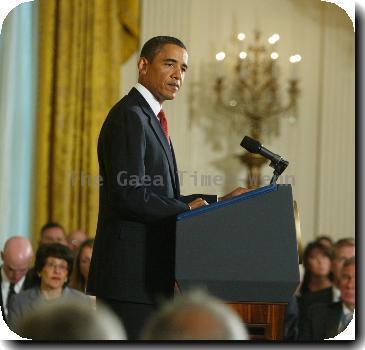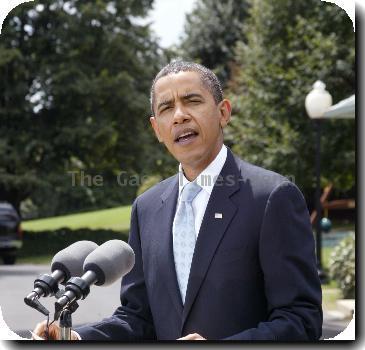Government says small amount of oil from Gulf spill has entered powerful current
By Greg Bluestein, APWednesday, May 19, 2010
Small part of oil slick reaches powerful current
ROBERT, La. — Federal scientists said Wednesday that a small portion of the oil slick from the blown-out well in the Gulf of Mexico has reached a powerful current that could take it to Florida. National Oceanic and Atmospheric Administration scientists said they have detected light to very light sheens in the loop current, which circulates into the Gulf and takes water south to the Florida Keys and the Gulf Stream.
The agency says that any oil would be “highly weathered” and could evaporate before reaching Florida. And it might never reach the state at all. But scientists said diluted oil could appear in isolated locations if persistent winds push the current toward Florida.
The Coast Guard announced Wednesday that tar balls washing ashore in the Florida Keys were not from the Gulf spill, but that did little to soothe fears the oil could spread damage along the coast from Louisiana to Florida.
The U.S. and Cuba were holding talks on how to respond to the spill, U.S. State Department spokesman Gordon Duguid said, underscoring worries about the oil reaching the loop current and being carried to the Florida Keys and the pristine white beaches of Cuba’s northern coast.
BP said Wednesday it hopes to begin shooting a mixture known as drilling mud into the blown-out well in the Gulf of Mexico early next week.
Engineers would like to start the procedure known as a “top kill” by Sunday. If it works, it should stop the oil that has been gushing since the offshore drilling rig Deepwater Horizon exploded off the coast of Louisiana April 20 and sank two days later.
“This is all being done at a depth of 5,000 feet and it’s never been done at these depths before,” said Doug Suttles of BP PLC, the oil giant that was leasing the rig when it exploded.
The House Transportation and Infrastructure Committee addressed the spill at a hearing Wednesday where leading Republicans including John Mica of Florida sought to pin blame on President Barack Obama’s administration. He cited Interior Secretary Ken Salazar’s acknowledgment Tuesday that his agency could have more aggressively monitored the offshore drilling industry.
Outlining what he called the “Obama oil spill timeline,” Mica said the administration failed to heed warnings about the need for more regulation and issued “basically a carte blanche recipe for disaster” in approving drilling by the Deepwater Horizon, leased by oil giant BP PLC, and several dozen other wells.
He also said the spill could have been contained more quickly if the Coast Guard and other agencies had a better plan.
“This went on and on,” he said. “I’m not going to point fingers at BP, the private industry, when it’s government’s responsibility to set the standards.”
Committee Chairman James Oberstar, D-Minn., took issue with the criticism, saying the drilling was approved early in the Obama administration, essentially continuing practices from President George W. Bush’s administration, and that decisions were made by career officials.
“I think it’s inflammatory to call it the Obama oil spill, and wrong,” Oberstar said.
Questions remained about just how much oil is spilling from the well.
New underwater video released by BP showed oil and gas erupting under pressure in large, dark clouds from its crippled blowout preventer on the ocean floor. The leaks resembled a geyser on land.
BP and the Coast Guard have said about 210,000 gallons of oil a day is gushing from the well, but professors who have watched the video and others say they believe the amount is much higher.
Steve Wereley, a mechanical engineer at Purdue University in Indiana, told The Associated Press that he is sticking with his estimate that 3.9 million gallons a day is spewing from two leaks.
“I don’t see any scenario where (BP’s) numbers would be accurate,” he said at a congressional hearing Wednesday.
His estimate of the amount leaked to date, which he calls conservative and says has a margin of error of plus or minus 20 percent, is 126 million gallons — or more than 11 times the total leaked from the Exxon Valdez disaster in 1989. The official estimate is closer to 6 million gallons.
Another researcher, Timothy Crone of Columbia University’s Lamont-Doherty Earth Observatory, said the latest video suggested a leak of at least 840,000 to 4.2 million gallons a day, though poor video quality made it difficult to come up with an accurate figure.
Rep. Edward Markey, D-Mass. called on BP to release live video feeds of the the oil so independent scientists can more accurately calculate the flow rate. He questioned why such data isn’t readily being made public.
Government agencies have set up a task force to focus on how much oil is spilling, but BP America President Lamar McKay said under questioning at Wednesday’s House hearing that officials still don’t know which estimates are correct.
“It’s theoretically possible,” that the larger estimates are accurate, he said. “But I don’t think anyone who’s been working on this thinks it’s that high.”
BP has tried several unsuccessful methods to contain the oil, but earlier this week managed to insert a tube into one of the leaks and says that as of Wednesday it was sucking 126,000 gallons a day to the surface.
Another strategy being considered along with the top kill is the “junk shot,” which involves shooting knotted rope, pieces of tires and golf balls into the blowout preventer. Crews hope they will lodge into the nooks and crannies of the device to plug it.
Associated Press Writers Paul Haven in Havana, Ben Evans and H. Josef Hebert in Washington, and Matt Brown in New Orleans contributed to this report.
Tags: Accidents, Barack Obama, Caribbean, Coastlines And Beaches, Cuba, Energy, Environmental Concerns, Florida, Latin America And Caribbean, Louisiana, North America, Robert, United States



